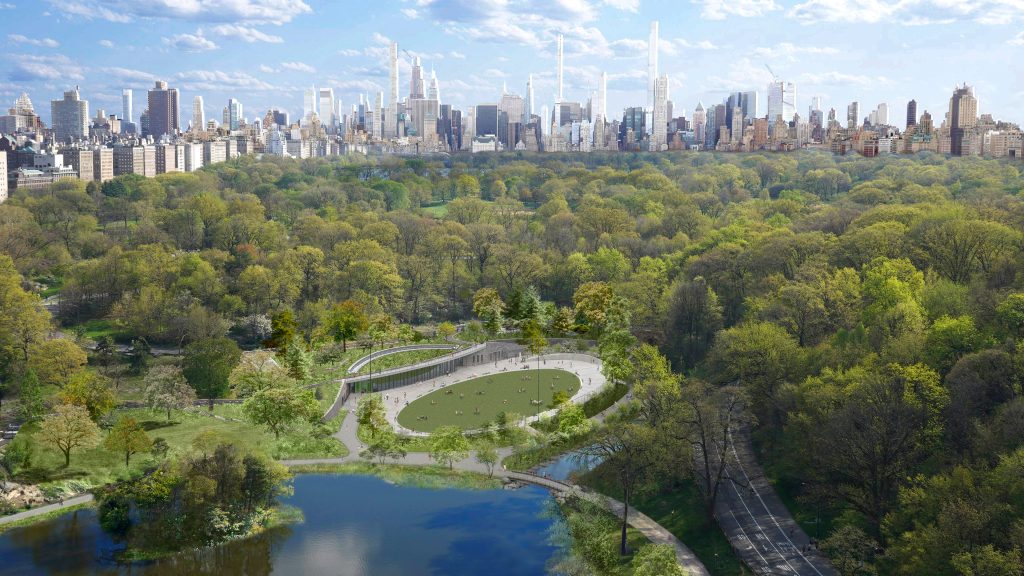The Davis Center is a blueprint for what is possible when urban planning meets the pulse of a community
By Central Park Conservancy and JPMorganChase
Along the edges of Central Park’s north end, the Harlem community has long written its own story—one that pulses with vibrant energy and history. The opening of the Central Park Conservancy’s new Davis Center at the Harlem Meer is putting that narrative into the spotlight, carried forward by a promise to preserve and nurture Harlem’s story. As cities across the country reimagine the role of public spaces, Harlem—especially the Davis Center—offers a compelling vision of a new civic model where local voices, cultural history, accessibility are built into the foundation itself.
The Davis Center sets a new standard for urban infrastructure, not only protecting the surrounding ecosystem, but actively fostering the renewal of wildlife and plant life. Thoughtful design invites the community to immerse themselves in the Park’s landscape like never before: the Kempner Boardwalk offers new vantage points of the Harlem Meer, while winding paths lead deeper into the North Woods. Even the green roof balances form and function, extending the Park’s greenery while seamlessly blending the center into the landscape.
Informed by the Harlem community’s feedback, the Center is both a gathering place and an accessible gateway to nature—both of which serve to connect neighbors to the park and to each other. Year-round programming has been curated to reflect and uplift the local community through organizations already doing meaningful work in Harlem.
Teacher Recess & Recharge, for example, invites Harlem’s educators to find respite in nature, recognizing that those who shape young minds deserve spaces to rest and nurture their own. A collaboration with the local school district integrates Central Park into the curriculum, transforming the landscape into a living classroom for neighborhood students through interactive learning experiences and field trips. Thanks to support from partners like JPMorganChase, these programs—designed for Harlem, often by Harlemites—are offered at little to no cost, ensuring access for all.
“It’s much less about the sport or the activity—it’s about what the community gains,” says Leah Day VanHorn, Senior Vice President of Public Engagement at the Central Park Conservancy. “If we can bring on local nonprofit partners whose missions are dedicated to lifting up youth and inspiring the next generation of civic leaders, it’s only going to amplify what the Davis Center is able to accomplish.”
JPMorganChase’s support of the Davis Center underscores its commitment to empowering Harlem’s future generations, aligning with its broader community banking efforts. Its flagship Community Center Branch in Harlem, now in its sixth year, has already shown how a financial institution can help uplift a community with a focus on economic mobility, financial health education, and meaningful local engagement—and is now being replicated across the country.
What’s unfolding in Harlem is more than a local success story: it is a blueprint for what is possible when urban planning meets the pulse of a community. In an age when community centers are increasingly recognized as infrastructure that is essential for public well-being, cities have an opportunity to reimagine their public spaces to better serve the needs of their residents. Resources like the Davis Center and Chase’s Harlem Community Center Branch show what’s possible when community voices shape the future of public space.

